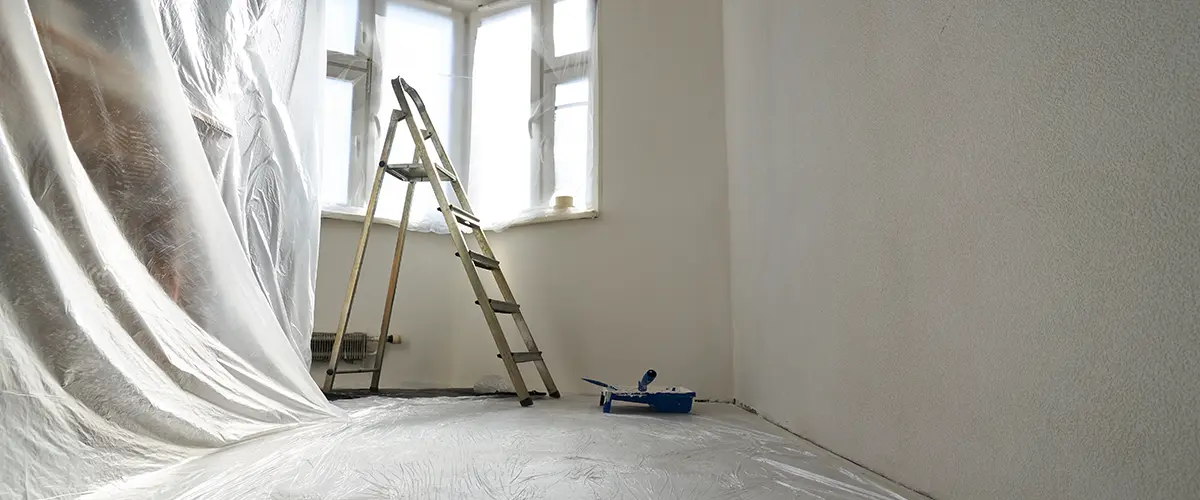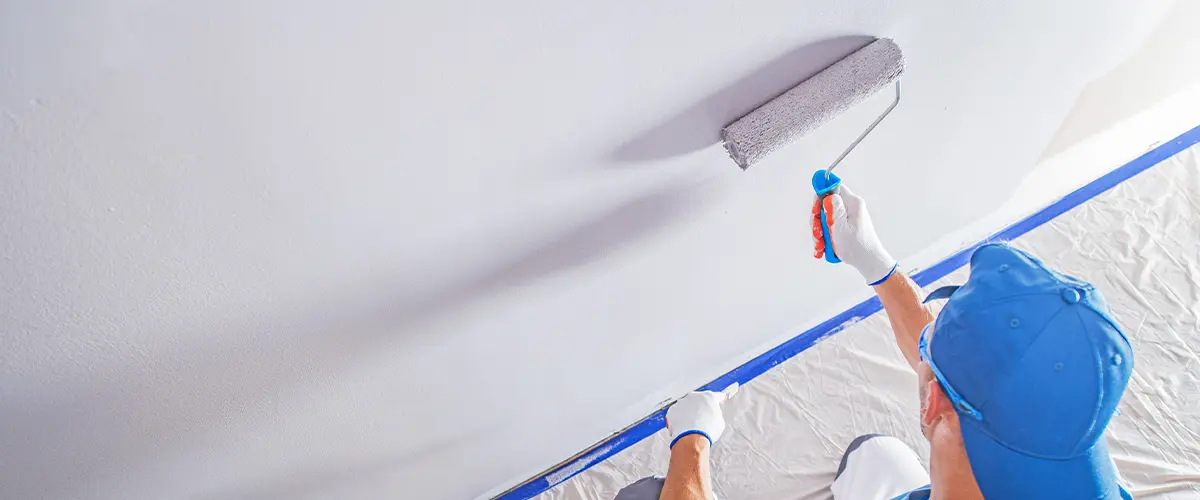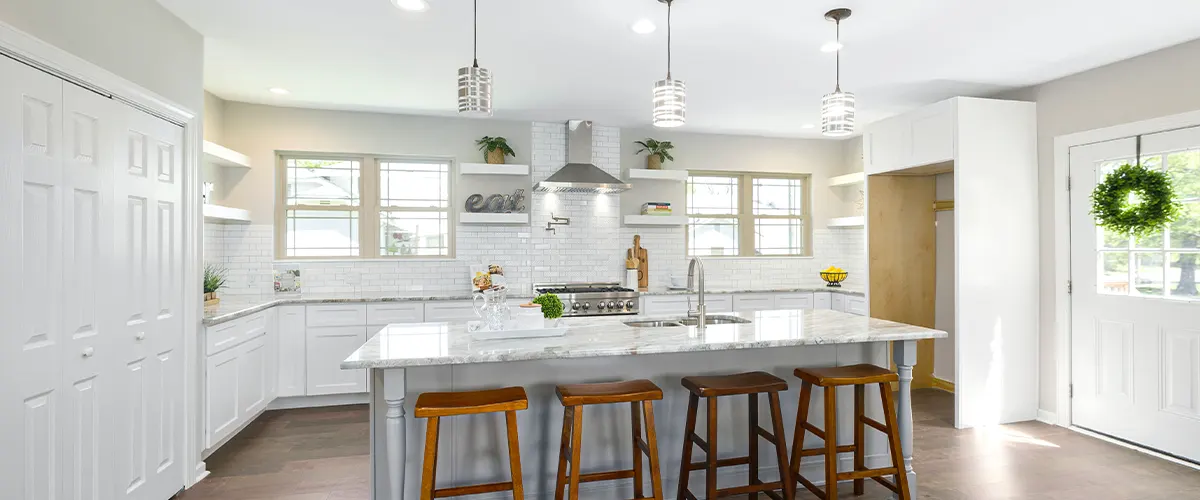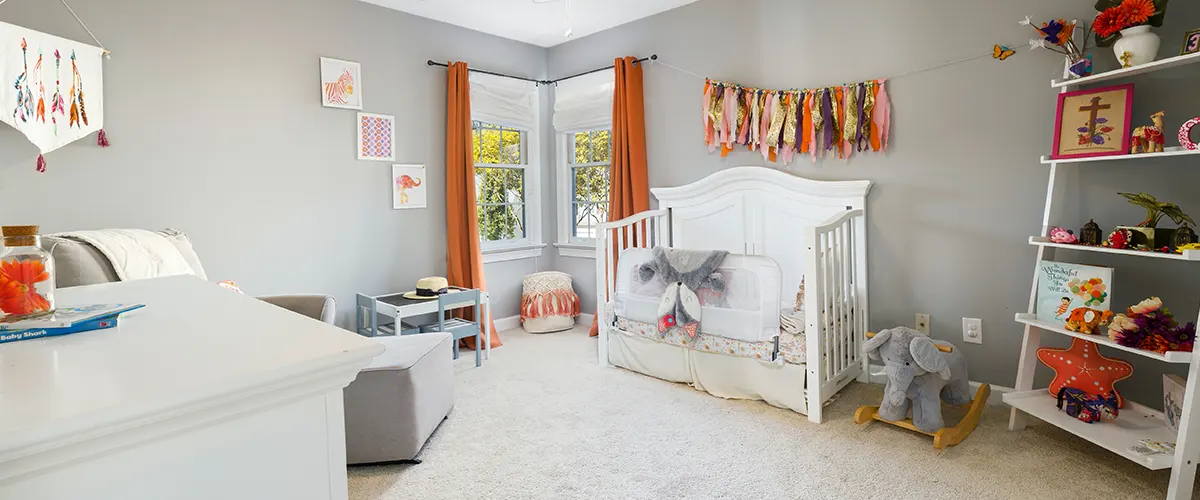Is your ceiling paint peeling up to a point where it drops residue on the floor. However, addressing this issue promptly is important as it may indicate underlying problems.
In this post, you can find out how to fix peeling paint on a ceiling. You can also discover what could be causing it and how to help prevent peeling ceiling paint.

How To Fix Peeling Paint On A Ceiling In 7 Steps
1. Find out what’s causing the peeling: To effectively address the issue, it is crucial to determine the root cause. Common causes include water damage, age, and high heat and humidity exposure. If water damage is the culprit, address the source before proceeding with repairs.
2. Identify the type of paint on your ceiling: Understanding the type of paint on your ceiling is essential for selecting the appropriate materials. Matching the color and paint type will help maintain a uniform appearance.
3. Prepare the area: Before repairing, clear the space below the peeling area and protect it with drop cloths. This step ensures that your belongings are safeguarded from dust, paint chips, and stray paint while also simplifying the cleanup process.
4. Get rid of the peeling paint: Use a putty knife or paint scraper to get rid of the loose paint on the ceiling. Lightly sand the area using 150-grit or higher sandpaper to create a smooth surface. Clean the dust thoroughly.
5. Patch the area: Apply a thin layer of patching compound using a putty knife to cover the peeled section. Allow it to dry and then apply a second coat if needed. Lightly sand and clean the area once again. Patching ensures that the repaired section blends seamlessly with the rest of the ceiling, resulting in a professional finish.
6. Prime the area: Apply an oil-based primer to the patched section and allow it to dry completely. Proper priming enhances adhesion and improves the longevity of the paint. Ensure adequate ventilation by using fans or opening windows due to the strong smell of the primer.
7. Paint the area: Finally, paint the patched area using the same type of paint that is on your ceiling. Begin painting from the center and gradually spread out, using lighter strokes as you move away from the middle. This technique helps achieve a seamless transition between the repaired and existing paint.

What 6 Main Factors Can Cause My Ceiling Paint To Peel?
Understanding the underlying causes of peeling ceiling paint is crucial for effective prevention and long-term maintenance.
Other damage. Water damage and other damages can cause paint to peel
Heat and humidity. Areas with high heat and humidity, like bathrooms and kitchens, can cause paint to peel faster than other areas.
Age. Age affects everything, including the paint on your ceiling. It could just be time to repaint your ceiling.
Improper painting prep. If the surface isn’t clean or doesn’t have proper priming, the paint can peel much faster. This happens mostly due to moisture. Moisture gets between the paint and the wall, causing it to peel.
Improper painting techniques. One last reason ceiling paint peels is not enough drying time. This can cause severe cracking or “alligatoring.”
Poor quality paint. The paint may not be of high enough quality. Ceilings in areas with high heat and humidity need paint that sticks better and is flexible. This way it can expand and contract with the heat and moisture.

How Can I Help Prevent My Ceiling Paint From Peeling?
Preventing peeling paint on your entire ceiling is essential to maintain its aesthetic appeal and prolong its lifespan. Implementing a few simple strategies can significantly reduce the chances of encountering this common issue. Here are some effective tips to help you keep your ceiling paint intact.
Use high-quality paint: Opt for high-quality paint specifically designed for ceilings. Consider using the bathroom and kitchen-specific paint, as they are formulated to withstand moisture and heat better. Investing in quality paint ensures better adhesion and durability, reducing the risk of peeling.
Ensure proper surface preparation: Adequate preparation is key to a long-lasting paint job. Before applying new paint, remove any loose or peeling paint using a wire brush or putty knife. Smooth out rough areas and sand them lightly to create a uniform surface. Thoroughly clean the ceiling to remove dust, dirt, and grease, as these can hinder paint adhesion.
Remove old paint: It is recommended to remove the multiple layers of old paint on your ceiling before applying a fresh coat. To achieve this, use either a paint scraper or a wire brush to strip off the old paint. This step is crucial in ensuring a clean and smooth base for the new paint, which ultimately reduces the likelihood of peeling.
Apply primer: Before painting your ceiling, always apply a coat of primer. Primer helps create a strong bond between the paint and the ceiling surface, promoting better adhesion and reducing the risk of peeling. Choose a primer suitable for your ceiling type and allow it to dry completely before applying it.
Allow sufficient drying time: It’s important to be patient and allow each coat of paint to dry completely before applying the next one. Rushing the process can lead to inadequate drying, which may result in premature peeling. Follow the manufacturer’s instructions regarding drying times to ensure optimal results.
Use proper painting techniques: When applying paint to your ceiling, use a high-quality paint roller. Start from one corner and work your way across the ceiling in even, overlapping strokes. Maintain consistent pressure to ensure an even application. Avoid excessive or uneven layers of paint, as they can lead to future peeling.

Or Get In Touch With Professional Interior Painter
At Bernardo’s Painting, we specialize in providing exceptional interior painting services that go beyond mere aesthetics. Our skilled team is experienced in handling peeling paint problems and delivering high-quality results that stand the test of time.
Trust us to transform your ceilings and create a fresh, captivating ambiance in your home. Contact Bernardo’s Painting today and let us exceed your expectations with our professional craftsmanship and attention to detail.
